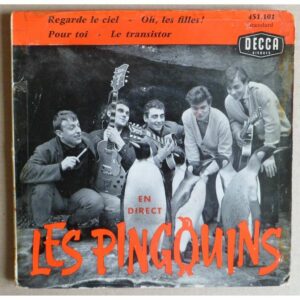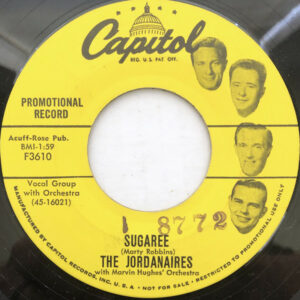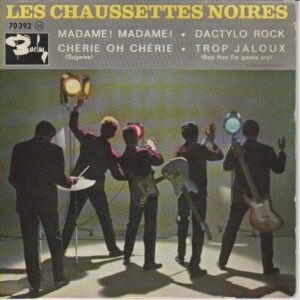Pour ce onzième numéro, nous allons évoquer la gente féminine.
Je voudrais remercier chaleureusement Vincent Lamy d’avoir bien voulu m’accorder un entretien et me donner quelques renseignements sur cette chanson.
Et une spéciale dédicace à mon cousin Laurent B pour m’avoir fait découvrir Au Bonheur des Dames.
Rita Brantalou (Jacques Pradel) est décédé le 21 juillet 2021. On trouvera ici, l’hommage de son pote Ramon Pipin (Alain Ranval).
You can find a summary in English below.
La pochette du 45T de Au bonheur des dames :

La version de Rusty York :
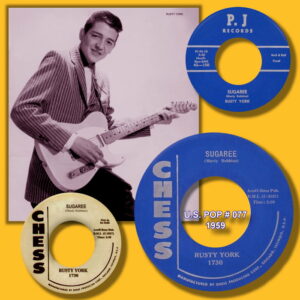
La version des Pingouins (notez la virgule à Oh, les filles!)
La version des Jordanaires :
La version des Chaussettes Noires :
La version de Dennis Lotis est ici
L’auteur Marty Robbins à la télévision en 1978 est là.
La pochette (recto/verso) du 33T « Twist » (avec les crédits Eddy Vartan pour le texte français de Oh! Les filles)
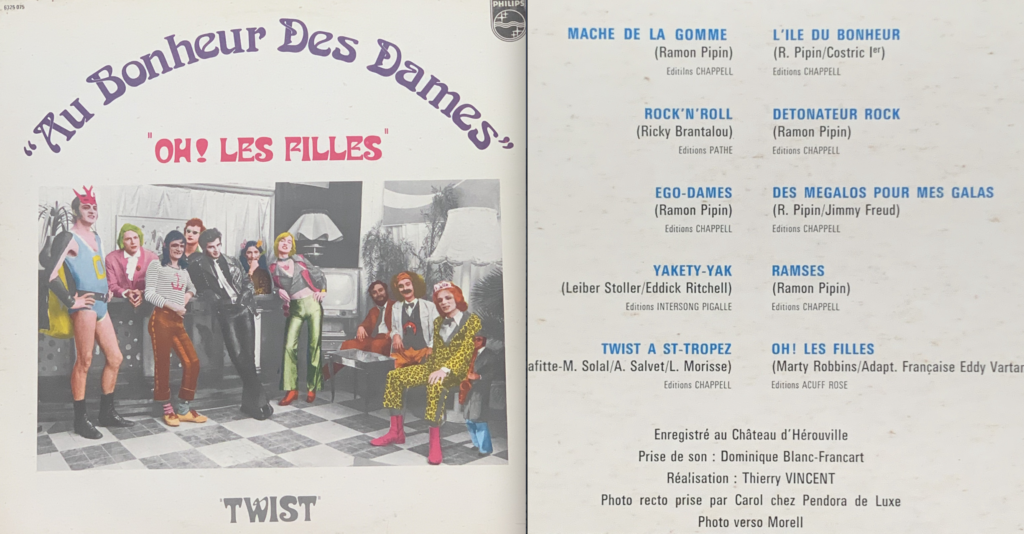
For my Friends who don’t speak French a summary in English. I hope it can help to follow what I say :
For this eleventh episode, we are going to talk about women.
– Sample of the cover by Au bonheur des dames
Before we dive into the fabulous story of Oh! les filles, let’s start by talking a little bit about the band Au Bonheur Des Dames. Their first album was released in 1974 and in addition to the hit Oh les filles it contains the song Ego Dames which explains the mood of the band : « we are not sad people … / we like the twist … ».
Mainly active in the second half of the 70’s, they dress and put on outrageous makeup as it was the Glam Rock fashion at the time. Their music, sung in French, leans more towards the 50’s and 60’s. Their debut album is called Twist, and they sing that they prefer Elvis rather than this « good old Alice » (Cooper).
Among the musicians are Ramon Pipin (guitar) and Rita Brantalou (guitar) who later created the excellent group Odeurs (to whom we owe the incredible hit Le cri du Kangourou). His real name Alain Ranval, Ramon Pipin has also released solo albums, composed film music (like Bernie de Dupontel) and worked as a guitarist or composer for Renaud for example. We owe him the music of Les Aventures de Gérard Lambert (a song for the French singer Renaud) among others.
Last but not least, all rock lovers of my generation have infinite gratitude for singer Vincent Lamy (aka Eddick Ritchell) and his weekly TV show Echo des Bananas in 1982 and 1983 which filmed artists under live conditions.
But back to the case of Oh les filles.
I have often read that it would be a cover of Sugaree sung by the Jordanaires (who were backing vocals for Elvis). But the connection with this version of 1957 did not seem obvious to me.
– Sample of the Jordanaires’ version youtu.be/n2Qo_okveFg
On Wikipedia, we talk about the version of Rusty York, American singer inducted into the Rockabilly hall of Fame in 2006. Indeed there, the music looks like Oh les filles!
– Musical sample of the Rusty York’s version youtu.be/0JwXMpBGymI
If the sax riff in this version will be adapted to the guitar, it seems that this is the source of the music of Oh les filles. Except that this title dates from 1959.
The site secondhandsong.com indicates that its first achievement was a rather jazz recording from 1956 sung by British star Dennis Lotis in the 1950s in the swing-pop genre.
– Sample of Lotis’ version youtu.be/RjlxxaQS7Bg
In summary, the music evolves from a jazz in 1956 to a more rock version in 1959 to which the version of our olibrius seems close.
The song is signed Marty Robbins, an American singer inducted into the Country Music Hall of Fame in 1982, but also actor and car driver. However, it does not seem to me that he recorded Sugaree on disk. Nevertheless, he will sing his song on television in 1978:
– Sample of the version Marty Robbins www.youtube.com/watch?v=nc7Q5xkTnYo
And for the French lyrics of Oh les filles?
There is an adaptation in French by Les Chaussettes Noires in 1961. But the title is Chérie Oh Chérie and the lyrics « darling oh darling, the sky is blue when you smile » has nothing in common with Oh les filles.
Musically, the Chaussettes Noires’ version seems to be inspired by the version of the Jordanaires (which will later be the opening for Eddy Mitchell)
In the « Yéyé » era, here were many groups that released one or two EPs before often disappearing for military service. This was the case with Les Pingouins (the penguins) who released a single in 1962 with their adaptation of Sugaree and whose French lyrics were signed by Eddy Vartan, Sylvie‘s brother.
– Sample of Les Pingouins’ version www.youtube.com/watch?v=vbwQZ6CwT9c
No doubt, this is the source we were looking for!
But in 1972, the internet obviously did not exist and you had to be quite a collector to own Les Pingouins’ EP. This was the case with Vincent Lamy who was a big fan of cats, socks and Penguins!
In addition, in the entourage of Au Bonheur des Dames, we find the artistic director Thierry Vincent, who before fulfilling his military obligations called himself Lou Vincent when he sang among the … Pingouins!
And for the recording of the Twist album, Dominique Blanc-Francard is in charge behind the mixer. Blanc-Francard who, before becoming the highly prized sound engineer we all know, officiated as a bassist in a band called, you guessed it … Les Pingouins!
Note that Marty Robbins’ lyrics mention only one « Baby » and that « I love you So » is much more conventional than Eddy Vartan’s « I love them too much »!
There remain three mysteries:
1 °) About music
• Musical sample « Qui c’est qu’a dit de s’arrêter? » (But who said to stop?)
This famous break at he end in Au Bonheur des Dames’ version does not appear in the Pingouins’ version. Who had the idea?
2 °) About lyrics
• Musical sample « je suis sorti avec Marcel(le) « I went out with Marcel(le) »
Who is the author of this supernumerary verse about Marcel who lives near Sarcelles?
3 °) About Carine
- Musical sample « J’aimerai toute ma vie Carine » (I will love all my life Karine)
Who are this mysterious girl ? And should we write Carine with a C or with a K?
Let’s lift the veil a bit:
1 °) For the final break:
This is exactly what it feels like to listen to, an improvisation during a studio session. And of course everything was analog at the time so it’s also the pleasure of being able to cut the tapes and accelerate them manually.
• Musical sample from the final acceleration
Dominique Blanc-Francard said that the recording took a long time especially for the drums. For the Pingouins it had just took 2 hours! At first the DJ’s (radio programmers) were a bit puzzled by this finale, not knowing if they cut the broadcast before or after it. Quickly they « played along » and got into the habit of not cutting the song anymore.
2°) For the lyrics in addition
Before being recorded, the track was already performed on stage by the band. Usually at the end of the concert, but the length of the song was a bit short for the end of the show. However, it was out of the question to add a solo or other demonstration of technical virtuosity which they hated in the progressive music of the time (punks before their time)!
Before taking the stage at a Fête de l’Humanité, Vincent Lamy had the idea of writing an additional verse. He quickly wrote one. With a little nod to the original version since « Marcel » is met in the metro as the « Baby » was met « at the station » at Marty Robbins’ version. But they hadn’t thought of asking the publisher for permission and Chappel Publishing imposed Eddy Vartan’s signature only for the whole lyrics. Therefore Vincent Lamy does not touch any right for the lyrics. The wonderful world of show business…
3 °) For posterity
– For Karine, I will not lift the veil, I let you dream.

